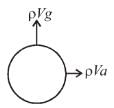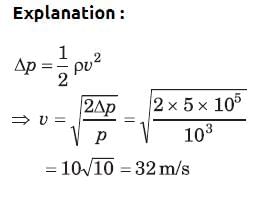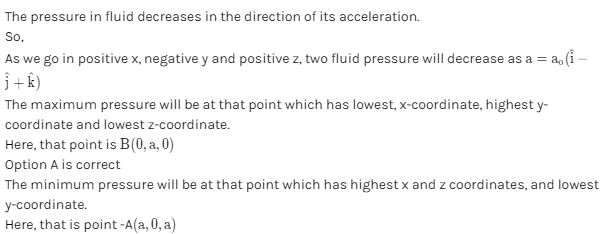Fluid Dynamics MCQ Level - 1 - Physics MCQ
10 Questions MCQ Test Topic wise Tests for IIT JAM Physics - Fluid Dynamics MCQ Level - 1
A horizontal pipe carries water in the positive direction of x increase in the positive x-direction. Small identical holes are made at three different places along the pipe such that stream from them come out vertically upwards. The height upto which the water stream rise from the three holes :
In the following figure as shown the flow of liquid through a horizontal pipe. Three tubes A, B and C are connected to the pipe. The radii of the tubes A, B and C at the junction are respectively 2 cm, 1 cm and 2 cm. It can be said that the :
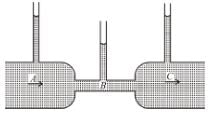

Figure shows an ideal fluid flowing through a uniform cross-sectional tube in the vertical tube with liquid velocities vA and vB and PA and PB. Knowing that tube offers no resistance to fluid flow then which of the following is true.
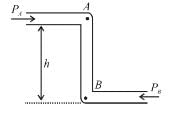

Figure shows a closed container completely filled with an ideal liquid of density ρ. In the liquid there is a spherical body of volume V and density σ attached to a string whose other end is, attached to the roof the container. The container is accelerating with an acceleration a towards right. The force exerted by the liquid on the spherical body when it is in equilibrium with respect to the liquid will be :

The leakage begins in water tank at position P as shown in the figure. The initial gauge pressure (pressure above that of the atmosphere) at P was 5 × 105 N/m2. If the density of water is 1000 kg/m2 the velocity with which water gushes out is :

A jet of water having velocity = 10 m/s and stream cross-section = 2 cm2 hits a flat plate perpendicularly, with the water splashing out parallel to plate. The plate experiences a force of :
When a hole is made in the side of a container holding water, water flow out and follows a parabolic trajectory. If a hole is made in the side of the container and the container is dropped in free fall (just before the water starts coming out), the water flow (Neglect effect of the surface tension)

The volume of a liquid flowing per second out of an orifice at the bottom of a tank does not depend upon :
Pressure gradient in the horizontal direction in a static fluid is represented by (z-direction to vertically upwards, and x-axis is along horizontal, d is density of fluid) :
The cubical container ABCDEFGH which is completely filled with an ideal (non-viscous and incompressible) fluid, moves in a gravity free space with a acceleration of  where a0 is a positive constant. Then the minimum pressure at the point will be
where a0 is a positive constant. Then the minimum pressure at the point will be



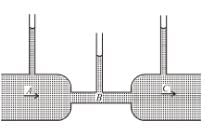


 )
)
